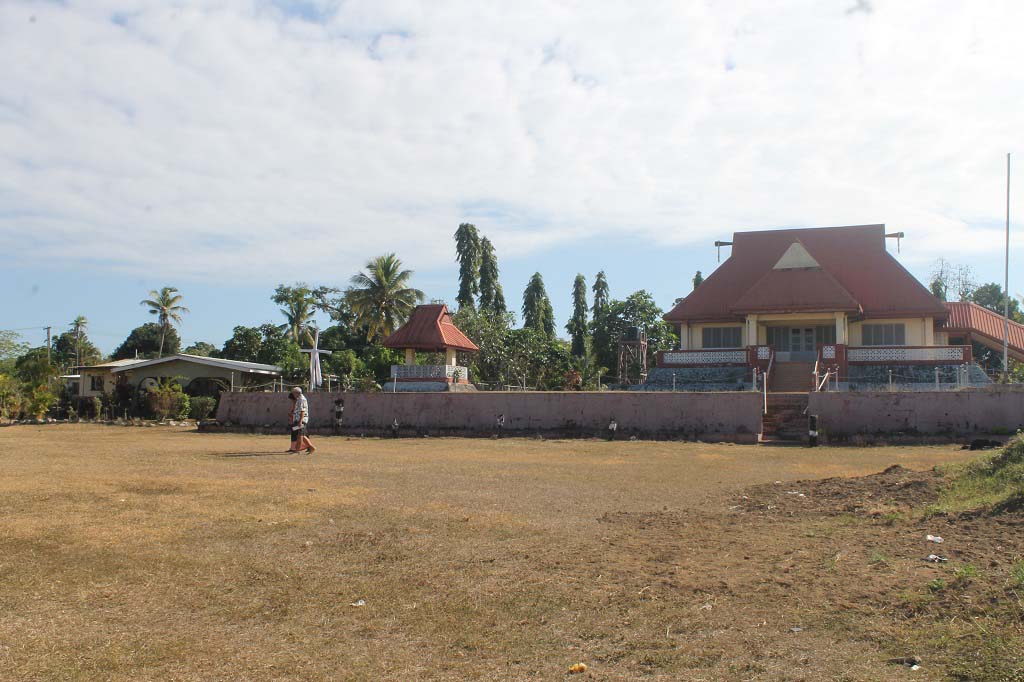Sorokoba Village, Ba
Sorokoba is located 3km north of Ba town and is the seat of the Tui Ba (paramount chief of Ba).
Last updated on 06 Jun 2025

Timeline
c.3500 BP
The original inhabitants of Ba were descendants of the Lapita people who came from the west (probably Vanuatu and New Caledonia) approximately 3500 years ago. Archaeological evidence suggests one of the oldest known settlement sites is at Natanuku near Ba (1290 BC).
Oral histories of Sorokoba state that the people of the Yavusa Tio and Yavusa Tacini originally came from the Nakauvadra Range area. They settled in the hills just north east of the current Ba Town at Koronubu and Navusarau. It is not known how long they stayed there. Constant tribal warfare caused them to move down to the coast where they made strongholds in the mangrove swamps. Nayavua was one of these strongholds with a natural moat and plentiful food supplies.
At Nayavua the Tio people were joined by other tribes, including the Namacuku people. The Namacuku people were the earlier inhabitants of the Ba coastal area and they have no oral tradition of coming down the hills from the Nakauvadra Range.
c.1860
This is roughly the time when Ratu Savenaca Nabekwa became chief (sau) of Ba. He had a quarrel with his relative Ratu Isireli Tawake who went to Bau to ask for help. A Bauan army was prepared and sent to Nayavua.
1861
The Bauans laid siege to Nayavua and it took them six months to sack it. They had the advantage of being armed with muskets. The leader at the time, Ratu Nabekwa, was taken to Bau as a prisoner of war.
1862
Nabekwa was appointed governor of Ba under the Cakobau government. People continued to live in Nayavua under Nabekwa’s governorship. Nabekwa constructed a stone bridge and water pipeline to connect Nayavua to the mainland.
1874
Cakobau and a number of Fijian chiefs ceded control of Fiji to Britain.
1879
Indentured migration from India began in 1879. These people were called “Girmitiya” and were brought to Fiji by British colonial officials to work on sugar plantations. Many worked and settled in the sugar plantations of the Ba region.
c.1900
Nabekwa had a new village site prepared at present-day Sorokoba. The name is believed to have been shortened from Soro-ko-Ba-vei-Karisito which means “Giving way of Ba to Christ”. A burenivanua was built overlooking the rara (parade ground). Nabekwa called upon all the people of the surrounding areas to bring soil from their land to construct the yavu (house foundation). According to Fijian custom, bokola (captives of war) were buried with the yavu. It is not clear exactly when the villagers moved from Nayavua to Sorokoba.
1916
The Indian indenture system in Fiji ends. Though the scheme was initially conceived as a temporary one by the British, many Indians chose to stay in Fiji after their indenture expired. The growth of a new Fiji-born Indian population gradually constituted an ‘Indo-Fijian’ community.
1981
In December construction was completed on the Tui Ba’s home at a cost of $85,000, reported the Fiji Times. The costs were met jointly by the Nailaga villagers, the Native Land Trust Board and the government.
2018
Over time members of the same yavusas have slowly spread to other villages. There has been intermixing too between Indo-Fijian and itaukei communities. In Sorokoba today, most of the men are sugar-cane farmers and subsistence farmers, planting either on their own land or leased land.
References
Rejieli K. Racule.1976. Sorokoba. Oral History, Vol. 4, No. 8, 1-49.
Sophie Ralulu, “Look Back: Tui Ba”, The Fiji Times (21 July 2019).